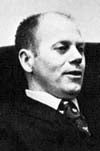
Donald N. Dedmon stepped in as acting President when Roland Nelson resigned in July 1970. He had joined the University two years earlier, in July 1968, as Dean of the College of Arts and Sciences. In July 1970 he was promoted to Executive Vice President and shortly thereafter was asked to be the acting President. He served in the latter position for six months, while the University searched for a new President.
In what should have been typically a caretaker assignment for the thirty-eight-year-old Dedmon it became instead one of the most challenging and heart-renting periods of his career in higher education. On November 14, 1970, just four months into his presidency, the University’s football team and coaching staff, as well as local supporters, were killed in a horrible plane crash at the Tri-State Airport, as the team was returning from a game at Greenville, North Carolina. Ironically, he had withdrawn his name for consideration as Marshall’s next president by the search committee the day before the crash. His was the difficult task to draw the University together as it mourned such a tragic loss. He admirably shepherded the institution through those trying days, meeting the many challenges with grace and dignity. An editorial in a local newspaper best summarized his performance:
Dr. Dedmon became a tower of strength during those bleak days. He seemed to be everywhere—consoling grief-stricken relatives, arranging memorial services, attending a long succession of funerals in many parts of the country, handling a myriad of university problems which arose from the ashes scattered on a hillside near Tri-State Airport.…He rose to the need and to many he was magnificent.
Upon the selection of John G. Barker as the next president on January 12, 1971, Dedmon continued to serve until Barker took over in March 1. He resumed to his former job, which was later renamed the Vice President of Academic Affairs. He resigned on February 15, 1972.
Donald N. Dedmon, the son of Clarence Dedmon and Ola (Garner) Dedmon, was born August 13, 1931, at Hartville, Missouri. He attended local public schools at Mountain Grove, Missouri, and entered Southwest Missouri State College in 1949, where he graduated with a B. S. degree in 1953. He obtained his M. A. from the University of Iowa in 1956. He accepted a position on the faculty at University of Iowa in 1956, where he worked until 1959. In 1959 he accepted a position at Minnesota State College at Saint Cloud, Minnesota, which he held until 1962. While at that institution, he also worked on a doctorate, receiving his Ph.D. in speech in 1961.
After receiving his doctorate he moved to Carbondale, Illinois, in 1962, where he held a position at the Southern Illinois University, becoming the chairman of the Speech Department before he left. In 1964 he accepted the chairmanship of the Speech Department at Colorado State University, remaining there until 1966. That year he joined Smith, Kline and French Laboratories, where he worked as a communication consultant and the head of training and management development. He remained until he joined Marshall University as the Dean of the College of Arts and Sciences in 1968
After leaving Marshall University Dedmon became Radford College’s fourth president, on March 20, 1972. At the time this Virginia college was a female-only institution with 3,600 students. He presided over the school for the next twenty-two years, endearing himself to the students and faculty. When he retired in June 1994, because of ill health, Radford College had achieved university status and was a coeducational institution with an enrollment of nearly 10,000. In 1989 a local newspaper stated: “He is a popular figure on campus, and his down-to-earth style has charted a casual-but-adventuresome course for a school that roared through the 1980s as the fastest growing public institution in Virginia.” He died on February 13, 1998, in Naples Florida, at the age of sixty-six.
Principals
- Isaac N. Peck, 1837-1839
- Jacob H. Patton, 1839- 1840
- Alfred E. Thom, 1840-1843
- Josiah B. Poage, 1843-1850
- Henry Clark and Joseph Foster, 1850
- William B. McFarland, 1850-1853
- Staunton V. Field, 1853-1854
- William R. Boyers, 1854-1858
- Benjamin H. Thackston, 1858-1861
- Rev. J. M. Brown, 1861
- Daniel W. Thrush, 1861
- Salina C. Hite Mason, 1863-1867
Presidents
- Stewart Harold Smith, 1961-1968
- Roland Hill Nelson, Jr., 1968-1970
- Donald Newton Dedmon, 1970-1971
- John Grove Barker, 1971-1974
- Robert Bruce Hayes, 1974-1983
- Sam Edward Clagg, 1984
- Dale Frederick Nitzschke, 1984-1990
- Alan Brant Gould, 1990-1991
- James Wade Gilley, 1991-1999
- Audy Michael Perry, 1999-2000
- Daniel Duane Angel, 2000-2005
- Michael Joseph Ferrell, 2005
- Stephen James Kopp, 2005 – 2014
- Gary G. White, 2014 – Jan 2016
- Jerome A “Jerry” Gilbert, 2016 – present
Bibliography With Source Notes
Created by Lisle Brown, former Curator Special Collections
Exhibits By Category
CONTACT
- Special Collections, Morrow Library, Marshall University, One John Marshall Drive, Huntington, WV 25755
- speccoll@marshall.edu
- 304-696-2343 telephone
- 304-696-2361 fax (800) 818-9816 toll free
OTHER RESOURCES
- Staff/Faculty
- Directions
- Research & Duplication Fees
- Regular Hours: Mon – Fri: 8 am – 4:30 pm; Sat – Sun: closed
- Contribute to Lisle Brown Memorial Fund